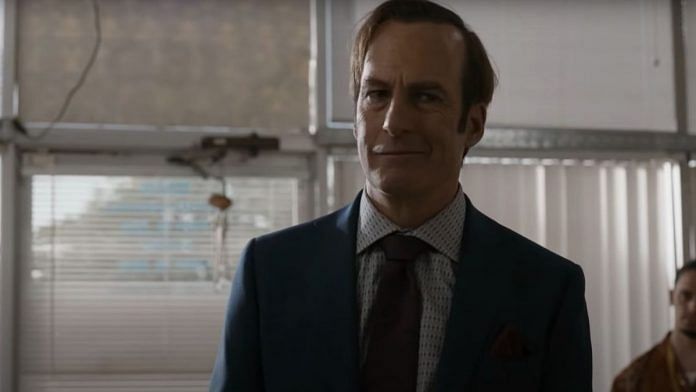It’s been 14 years and 127 hours of content since viewers were first introduced to the seedy underbelly of Albuquerque, New Mexico. Violent criminals, drug cartels and crooked lawyers formed Netflix’s most compelling fictional universe. And now it has closed its doors for the last time on Tuesday, with the finale of Better Call Saul.
Writer-directors Vince Gilligan, Peter Gould and their team had already broken the internet and awards ceremonies once in 2013 with Breaking Bad, which depicted high school chemistry teacher-turned methamphetamine kingpin Walter White’s descent into greed and murder. In 2019, Gilligan offered an emotional epilogue to the series with the spin-off film El Camino, which provided a conclusion to the story of White’s tortured associate, Jesse Pinkman.
Now in 2022, Gilligan and Gould saved their best for last and led the way to stick the landing for the third time in Better Call Saul. The series served as both the prequel and the sequel to Breaking Bad by centring on Jimmy McGill, better known as Saul Goodman, the corrupt lawyer who covered up for White and Pinkman every step of the way.
Also Read: Never Have I Ever has love, heartaches, flings and a little more this season
Magic at the writer’s room
The strengths of Gilligan and Gould’s writers’ room have been evident since 2007 when Breaking Bad began production. But it has only been refined over the course of Better Call Saul, as they depict Jimmy McGill’s rise and fall from a young scammer in the Chicago suburbs to a straitlaced public defender in Albuquerque. But the character invariably “slips” back to his old days as Saul Goodman and later runs from justice, managing a Cinnabon in Nebraska.
Over the course of six seasons and 63 episodes, the team has mastered the art of non-linear storytelling and three-dimensional character writing, where even the most superfluous, seemingly self-indulgent scenes and creative choices pay off in the long run.
In doing so, Gilligan, Gould and co. paint a beautiful, tragic picture behind the persona of Saul Goodman, peeling back the layers that made up a sleazy lawyer who often served as light comic relief in Breaking Bad. It travels to great lengths to establish how he got to this point in his life.
This is done from the opening scenes of Better Call Saul’s first season itself, with distinctive shots and montages set to an appropriate score and continues to serve as a thematic basis for what’s to come. The most poetic parallel here is drawn between the process of baking in a Cinnabon in the first episode, ‘Uno’ to baking in a prison in the finale, ‘Saul Gone’. The episodes showcase how in the grand scheme of things, the psychological effects of both locations were essentially the same for McGill.
Also Read: Neil Gaiman’s The Sandman is Doctor Who for adults. What hurts it is Netflix’s release strategy
Bob Odenkirk masterclass
A big reason this character managed to rise above his previous caricaturish portrayal and establish himself in his own series is the actor who played him—Bob Odenkirk. Prior to Breaking Bad, Odenkirk had mainly been typecast in bit-part comedic roles dating back to his days leading the sketch series Mr Show (1995). Be it a blowhard boss in How I Met Your Mother (2005), a struggling medical student in Seinfeld (1989), a lawyer on Newsradio (1995) or even a failed auditioner for The Office (2005)—Odenkirk’s artistic journey has culminated to this.
In Better Call Saul, Odenkirk finally got the opportunity to balance both muscles of comedy and drama and deliver six seasons’ worth of emotional range with a flair for unforgettable dialogue delivery, putting him on the same pedestal as the greats of the industry.
Odenkirk is further supported by a tremendously experienced ensemble with powerful and pivotal character arcs of their own, as the writers seamlessly blend the legal courtroom with the criminal and cartel world, adding colour to everyone’s lives before sapping it with each subsequent departure until everything is simply black-and-white.
Towards the final stretch in particular, Rhea Seehorn and Patrick Fabian go toe-to-toe with Odenkirk as fellow lawyers Kim Wexler and Howard Hamlin, as do Jonathan Banks as criminal enforcer Mike Ehrmantraut and Tony Dalton as cartel leader Lalo Salamanca.
But Better Call Saul primarily belongs to Odenkirk as well as Gilligan and Gould’s writing team, as they reward viewers for over a decades’ worth of devoted following, far-flung fan theories and countless ‘Bravo Vince’ and ‘Chicanery’ memes with a fittingly sombre farewell that is unlikely to be matched by others in its field in the years to come.
(Edited by Srinjoy Dey)



